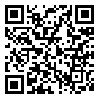BibTeX | RIS | EndNote | Medlars | ProCite | Reference Manager | RefWorks
Send citation to:
URL: http://refahj.uswr.ac.ir/article-1-2091-en.html
Objectives: Using statistical analysis on drug addiction with a view of finding solutions for its prevention and treatment is an acceptable and common method. Studying the problem in Iran with regards to existing evidences indicating high rate of drug abuse in the country and high number of drug users as well as the geographical location of Iran in neighborhood of two major illicit drug producers in the world (Afghanistan, Pakistan) is considered as an important element. Lack of appropriate statistics on the current status of drug abuse in Iran led us to focus on this important issue. Methods: Therefore, a questionnaire was prepared and relevant data were collected. Since it is not possible to have access to random sample representing the whole drug abuser population of the country, two groups of accessible drug abusers are identified: first, drug abusers referring to drop-in center in southern Tehran, and second, street drug abusers of Tehran. Between 2002 and 2005, the data related to 3933 drug abusers were collected and studied. Base on these data, in addition to demographic specification of each drug abuser (gender, age, married status, education, job …) and comparing these specifications in different years under study, appropriate models were befitted and valuable reports on drug abuse trend and behavioral models of drug abusers were developed. SPSS, SPLUS and R software were used to analyze these data. Findings: The age of drug abusers were in the range of 15 to 84 years, 96% of which were male. The result of this study shows that in recent years, crack abused has unfortunately increased sharply. Injection was reported as the most common way for using drugs (60%), 70% of that shared needles which in turn increases high risk behaviors. It was found that the average age for starting drug abuse by the addicts who had the history of drug abuse among the family members is about 2 years lower than those without such a history. Analysis of data also shows that injecting drug users started their drug abuse practice earlier than other groups. At the same time, it was indicated that crack abusers are the youngest group of addicts while opium users are the oldest ones. The analysis also proves that odds ratio of injecting among those who started the drug abuse at an older age is 95% of the people who became drug abuser at a younger age. Moreover, the Logarithm of odds ratio of opium and crack users to inject drugs is less than heroin users. Results: Through result of this study suitable behavioral analysis can be developed which will be the beginning of a harm reduction program.
Received: 2015/09/9 | Accepted: 2015/09/9 | Published: 2015/09/9
| Rights and permissions | |
 |
This work is licensed under a Creative Commons Attribution-NonCommercial 4.0 International License. |





